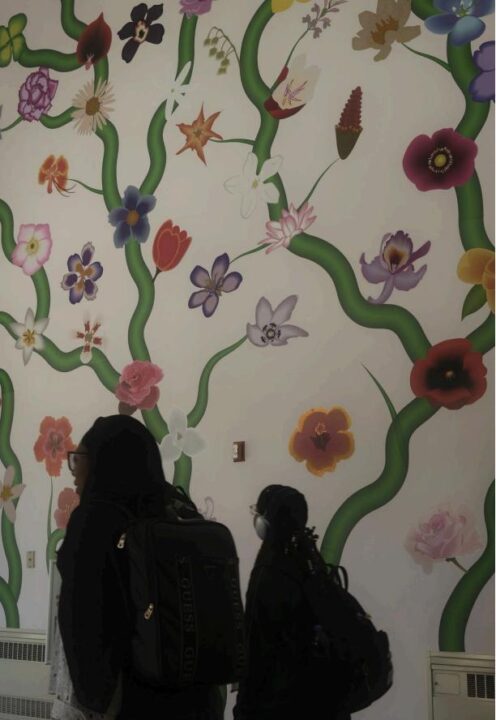What makes a monster, and what makes a man? The ideas of empathy and humanity versus power and fear are explored in Toby’s Dinner Theatre’s performance of “The Hunchback of Notre Dame.” The set threatened to escape the theater, with its realistic stained glass window designs and soothing church aura. The introduction was told by the characters themselves, as they narrated their own actions in a chilling display of disconnect between the character and the narrator within the character.
This incredibly powerful musical is based on Victor Hugo’s novel, written in 1831. It opened with Dom Claude Frollo and Jehan Frollo, two orphaned brothers given refuge by the Catholic church. At this time in France, there was quite a bit of contempt surrounding the Romani people, also known as the ‘gypsies.’ The bishop of the church caught Jehan with one of these gypsy women and, as a result, Jehan was banished. This left Claude alone at the church with an intense fear of sin.
In this production, the spiritual characters were dressed in gray tones while the gypsies wore bright colors with creative frills. The gray tones seemed to resemble the costumes in such films like “The Giver” and “1984” to remind the audience that the particular group wearing these colors is under the control of a higher power, and cannot think freely. The gypsies wearing more exciting clothing speak of the freedom they feel despite oppression by the church.
A few years later, Claude found Jehan on his deathbed where he asked him to care for the child he conceived with a gypsy. This child is Quasimodo, the main protagonist of the musical. According to the original novel, Quasimodo was born with a hunchback, a wart covering one of his eyes, and a gradually developed deafness. Claude reluctantly agreed but chose to hide the “monster” from the public by locking him in the bell tower of the church.
Though Quasimodo was raised with the ways of the Catholic church, he did not share the same hatred as archbishop Frollo. More than anything, he wanted to be a part of the world outside the bell tower he lived his life trapped inside. During the Feast of Fools, he was provided this exact opportunity. The Feast of Fools was a festival where gypsies were allowed to roam the streets freely without the threat of being arrested.
During the feast, he met Esmeralda, a beautiful gypsy woman that showed him kindness when others turned on him. Just as this meeting occurred, the archbishop fell in love with the girl, as did the honorable captain of the guard, Phoebus de Martin. While Phoebus treated Esmeralda with respect despite her gypsy status, Frollo does not understand his lustful, delusional feelings.
Esmeralda wielded a tambourine, and used it to enhance her dance. Just like Quasimodo and his beloved bells, these instruments were used as expressions of freedom and a learned practice. Esmeralda used her bells while dancing, expressing herself in a way that brought joy to herself and those around her, much like the way Notre Dame’s bells brought Quasimodo joy when he would ring them.
The archbishop abused his power as the head of Notre Dame and lit the match of a city-wide witch hunt for the innocent gypsy woman. He was delirious to catch her, as well as Captain Phoebus and anyone else who dared to stand in his way. In return for Esmeralda’s kindness, Quasimodo provided her with sanctuary in Notre Dame, despite her status as a gypsy. An important theme in “The Hunchback of Notre Dame” is the feeling of safety or ‘sanctuary’ that was meant to be felt at the church. How right it is then for the bell tower where Quasimodo was said to have spent his life to be spared from the recent fire at Notre Dame?
Actor and host Robert Biedermann who has worked at Toby’s Dinner Theatre for about thirty years says, “We build a lot of dust collectors, and it [the Notre Dame Cathedral] was a magnificent dust collector. No one got hurt, no one died, and they raised one billion dollars in two days.” This opinion rings as loud and true as the bells of Notre Dame. Though the church was and is a beautiful piece of history, should this money not be used to promote the idea of sanctuary to those that need it?
During the five years the church’s authorities say it will take to complete this project, tens of thousands of children around the world will die simply because they don’t have enough food or clean water. Millions of people will continue to face homelessness. Yet nobody comes to their aid. These problems could be easily remedied with a fraction of the funds dedicated to rebuilding one of the thousands of churches in France.
As the world has just proven, these funds needed to end world hunger, save the oceans and provide shelter to the many homeless are readily available. What makes a mere building more worthy of these funds than any other cause? This is not to say that Notre Dame is not a significant part of history — it most definitely is — but it calls into question what people prioritize. The lessons of Quasimodo, and his character’s devout kindness and inclusiveness should be heeded by everyone. The incredible depth of the show and its message about human decency and providing for those less fortunate were far more powerful than the fire.


